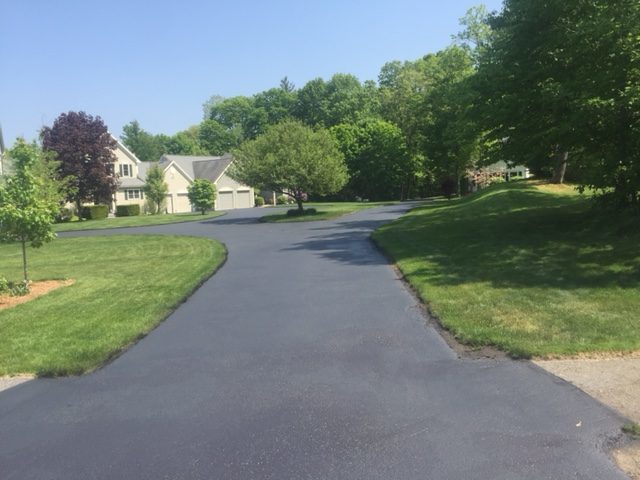Efficient Asphalt Repair: Cold Mix Sealing Techniques Introduced
Efficient Asphalt Repair: Cold Mix Sealing Techniques Introduced
Blog Article
Cold Mix Asphalt Vs. Hot Mix Asphalt: Which Is Right for You?

Composition Differences
Cold mix asphalt is generated by emulsifying the asphalt binder with water and an emulsifying agent prior to blending it with accumulation. The warm mix asphalt manufacturing process includes heating up the accumulation and asphalt binder individually prior to incorporating them at the asphalt plant.
Furthermore, chilly mix asphalt has a tendency to be less dense and a lot more flexible than warm mix asphalt. This adaptability makes it far better suited for areas with higher levels of movement, such as driveways or roadways with rush hour. On the other hand, warm mix asphalt is recognized for its high longevity and resistance to rutting and cracking, making it a recommended choice for freeways and high-traffic roads where durability is vital.
Setup Process Variances
The procedure of setting up cold mix and hot mix asphalt shows notable variations in their requirements and procedures. In comparison, warm mix asphalt requires an extra elaborate installation procedure. Due to the heating demands, warm mix asphalt installations are normally lugged out by professionals with specific tools, ensuring an extra structurally sound and long-term outcome.
Toughness and Long Life Variables
When considering asphalt options, resilience and durability are essential elements to assess for long lasting pavement performance,. Warm mix asphalt (HMA) is understood for its phenomenal durability and long life. The high temperatures during the laying and blending process permit far better compaction, resulting in a denser and more powerful sidewalk structure. This results in HMA being much more resistant to rush hour lots, harsh climate condition, and the impacts old contrasted to cool mix asphalt (CMA)
In terms of longevity, HMA commonly outshines CMA as a result of its premium toughness and resistance properties. HMA sidewalks have a longer life span, calling for less constant repair services and maintenance, which can equate to cost savings in the lengthy run. Furthermore, HMA sidewalks are more quickly customizable to satisfy specific job requirements, better enhancing their durability.
Expense Factors To Consider
Considering the financial implications is an important aspect when examining the option between hot mix asphalt (HMA) and cold mix asphalt (CMA) for sidewalk projects. While the initial expense of hot mix asphalt is generally higher than that of chilly mix asphalt, HMA typically offers an extra economical option in the lengthy run due to its premium resilience and longevity.
Along with material costs, it's important to take into consideration the expenditures connected with installment and upkeep when comparing HMA and CMA. HMA typically calls for specialized tools and knowledgeable labor for correct setup, which can affect general project prices. Alternatively, CMA is simpler to collaborate with and official website can often be used making use of easier techniques, potentially lowering installment expenses. Inevitably, the decision between HMA and CMA ought to take into consideration not just the initial expense yet likewise the long-term economic implications to determine one of the most affordable alternative for the certain sidewalk job.
Environmental Influence Contrast
Contrast of the environmental impacts between warm mix asphalt (HMA) and cold mix asphalt (CMA) discloses distinctive distinctions in sustainability techniques. HMA manufacturing calls for high temperature levels, leading to increased energy consumption and greenhouse gas emissions.
Furthermore, the usage of CMA typically entails recycling existing asphalt sidewalk, advertising resource preservation and lowering the amount of waste sent to land fills. By deciding for CMA over HMA, roadway building and construction jobs can contribute positively to environmental conservation initiatives.
Verdict
In conclusion, the selection between chilly mix asphalt (CMA) and hot mix asphalt (HMA) depends upon numerous elements such as make-up, installation process, resilience, long life, cost, and environmental influence. angle parking. While CMA uses a cost-efficient and quick service for small repair work, HMA makes sure superior sturdiness and durability for rush hour locations. Think about these variables meticulously to figure out which kind of asphalt is the right choice for your paving needs

Considering the economic implications is a critical facet when reviewing the choice in between warm mix asphalt (HMA) and cold mix asphalt (CMA) for sidewalk projects. While the first cost of hot mix asphalt is commonly higher article source than that of chilly mix asphalt, HMA often supplies a much more cost-efficient solution in the long run due to its exceptional durability and durability. asphalt repair.Contrast of the environmental effects in between hot mix asphalt (HMA) and chilly mix asphalt (CMA) exposes distinctive distinctions in sustainability techniques.In final thought, the selection in between cool mix asphalt More hints (CMA) and warm mix asphalt (HMA) depends on various aspects such as make-up, installation process, resilience, durability, price, and ecological impact
Report this page